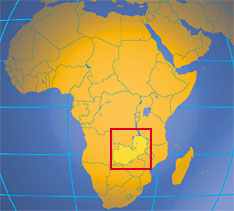At present, Zambia Electricity Supply Company (ZESCO) is the largest electricity company in Zambia, running and operating power stations, transmission lines, and distribution networks. The other major power company is Copperbelt Energy Company (CEC).
Zambia’s power generation capacity is 2 310 MW, but averages 1 400 MW which increases to 1 800 MW during peak periods daily and has failed to meet the consumer demand in the country. The total installed capacity in Zambia was 1 838 MW as of February 2006, . ZESCO owned 1 700 MW and the remaining 138 MW power stations are owned by private companies such as Copperbelt Energy Corporation (CEC) and Konkola Copper Mines (KCM). Most of the private companies purchase electricity from ZESCO and retail it to mining companies. Gas-turbine power plants owned by the private companies are maintained as standby emergency power. Two small hydropower stations, Lunsemfwa (18 MW) and Mulungushi (20 MW), are owned by private companies that sell their power to ZESCO.
By
August 2015 Zambia experienced country wide blackouts of up to 8
hours per day due to the low levels of the Kariba Dam. According to
the
Zambezi River Authority (ZRA) the dam wall suffered from
alkali-aggregate reaction, which induces swelling within the concrete
mass. Another
problem was caused by the spillway that was no longer opening and
closing automatically to maintain the required water levels. An
unstable foundation can wash away the dam - a potential catastrophe
for the 3.5 million people along the Zambezi River mainly in
Mozambique and Malawi. Cahora Bassa Hydro-power plant in Mozambique
would be destroyed if the dam wall is washed away.
Private investors are reluctant to get involved in power generation and distribution due to Zambia's low tariffs, meaning the economy will continue to be hostage to the vagaries of the weather for the dams that provide more than 90% of its electricity.
Private investors are reluctant to get involved in power generation and distribution due to Zambia's low tariffs, meaning the economy will continue to be hostage to the vagaries of the weather for the dams that provide more than 90% of its electricity.
Zambia's overuse
of the world’s biggest man- made reservoir to generate electricity
has depleted its water levels, according to Guy Scott, a former vice
president who led the country for three months until January 2015 .
His comments contradict government assertions that drought is to
blame for the country’s worst-ever power crisis.
Diesel
power stations owned by ZESCO
- Mwinilunga has a capacity of 1.13 MW
- Kabompo has a capacity of 1.13 MW
- Zambesi has a capacity of 0.42 MW
- Mufumbwe has a capacity of 0.76 MW
- Kaoma has a capacity of 2.62 MW
- Luanggwa has a capacity of 0.29 MW
- Lukulu has a capacity of 0.51 MW
- Chama has a capacity of 0.53 MW
- Kaputa has a capacity of 0.67 MW
Gas
turbine power station which are privately owned.
- Bancroft has a capacity of 20 MW
- Luano has a capacity of 40 MW
- Luanshya
has
a capacity of 10
MW
- Mufulira
has
a capacity of 10
MW
- Nkana
has
a capacity of 20
MW
Hydroelectric
power stations
The
installed capacity of three hydropower plants owned by ZESCO, namely
Kariba North (660 MW), commissioned in 1976, upgraded by 60 MW in
2005), Kafue Gorge (900 MW, 1972) and Victoria Falls (108 MW, 1936)
shares 98% of the total installed capacity of ZESCO power plants.
Small hydropower plants have been synchronized to the national
grid
step by step since they were developed as power sources for
independent power networks in the rural areas. At present, all four
small hydropower plants are synchronized as both Musonda Falls (5 MW)
and Chishimba Falls (6 MW) were linked to the National Grid in 2004.
- Kariba North Bank Power Station has an installed capacity of 660 MW and is owned by ZESCO
- Kafue Gorge Power Station was commissioned in 1971 and the project was completed in 1973. The project had an initial capacity of 600 MW using four units but this was later increased to six units with an installed capacity of 900 MW
- Victoria Falls Power Station has a capacity of 108 MW and is owned by ZESCO
- Lusiwasi Power Station has a capacity of 12 MW and is owned by ZESCO.
- Musonda Falls Power Station has a capacity of 5 MW and is owned by ZESCO
- Chishimba Falls Power Station has a capacity of 6 MW and is owned by ZESCO
- Lunzua River Power Station has a capacity of 0.75 MW and is owned by ZESCO
- Lunsemfwa Power Station has a capacity of 18 MW and is privately owned.
- Mulungushi Power Station has a capacity of 20 MW and is privately owned.
Shiwangandu Mini-Hydro Power Station Project in the Chinsali District has a capacity of 1 MW


No comments:
Post a Comment